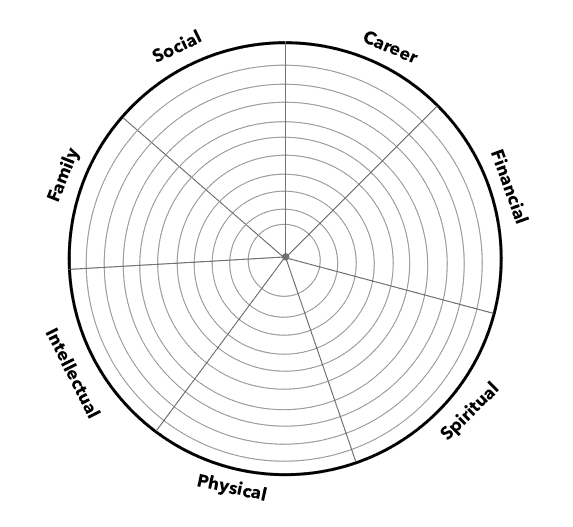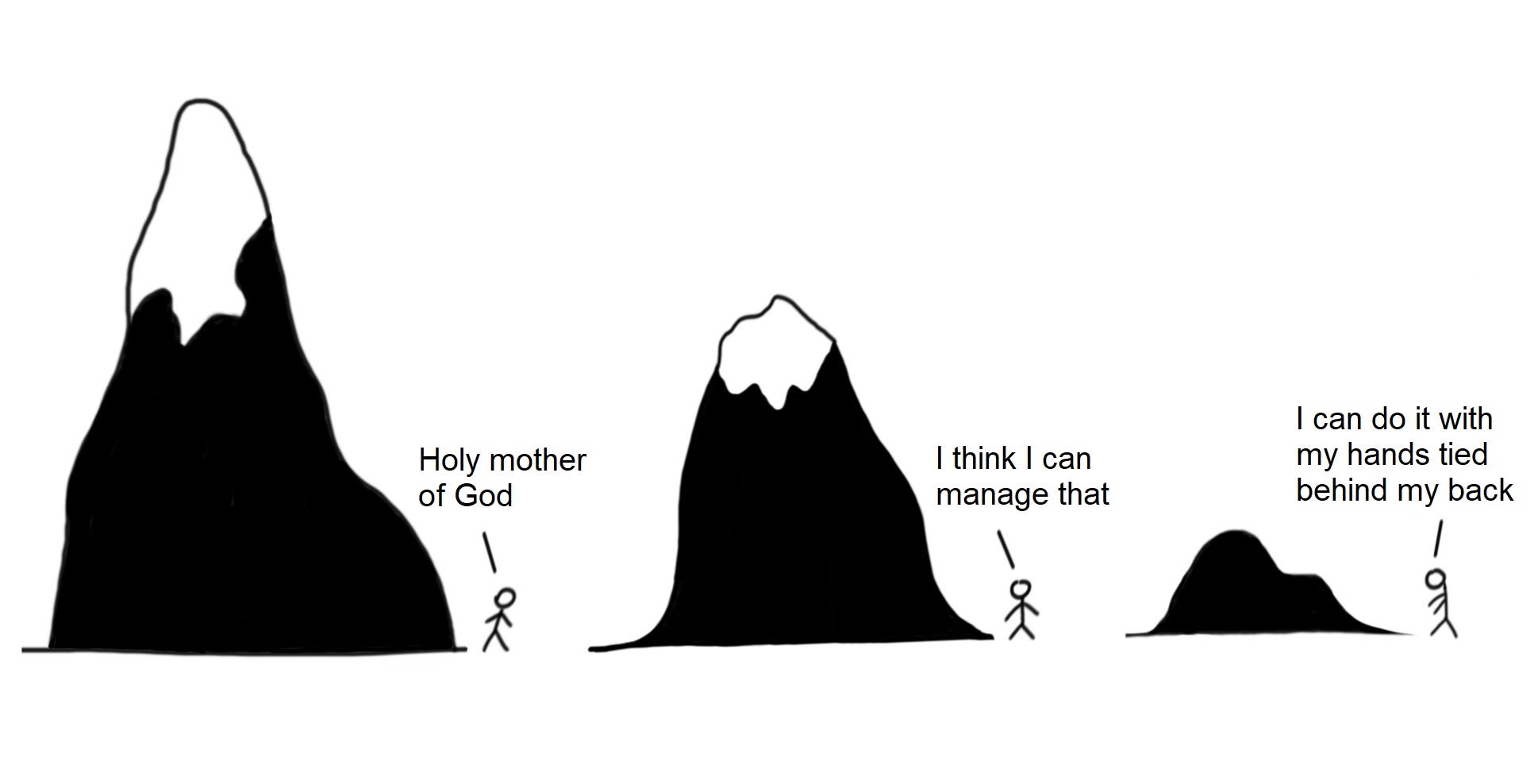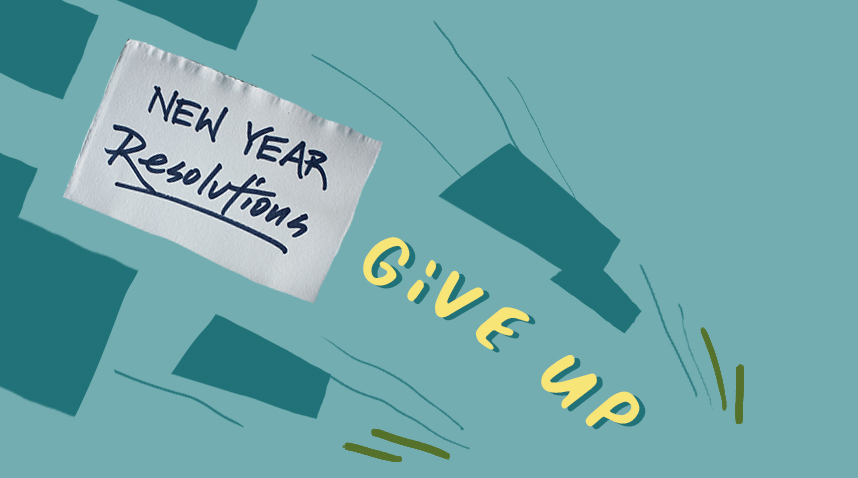TLDR: For people who are all ready to go, and always succeeded in being discipline, you may stop reading now. The article has three parts: the why, the how and the what. 1) Understanding why a goal is needed, 2) How to create optimal conditions for success, 3) Strategies for building habits that stick.
Three young children huddled together, their mouths agape with awe at the impressive display of orange and green fireworks lighting up the night sky with its glittery spiral sparks. I, too, was once that wide-eyed little girl believing that once the clock strikes 12, the magic of The New Year will finally bring about positivity, change and of course, washboard abs. Year after year, the only thing that eroded were not my fats, but my faith in resolutions.
Peeling the ra-ra away from the grand celebrations, resolutions are nothing other than a goal that someone sets for himself or herself. But given the fact that resolutions are set and revisited only once a year, it lacks a regular review or accountability system, it is doomed to fail.

We need a better system equipped with accountability and regular review. What I offer for your reading here is a system that is based on scientific theories, and by no means a perfect one, but it seems to be working for me. Take it with a pinch of salt. I’ll also be attaching some trackers to aid with the implementation of these habits.

Source: The Daily Mississipian
Step 1: [Why] — Set it right: Find personal meaning
First of all, why do you even want to improve yourself? While the answer may seem obvious at first glance, is it really reflecting your true motivations? With the barrage of perfect bodies and perfect lives that we consume on a daily basis, it is so easy to be spurred on with desire- like a kid getting to choose anything in Candy Wonderland. The trouble with that is, as fleeting as it arises, the desire that is not rooted in personal meaning is fickle- it does not have any substance to weather through the ups and downs of transformation.
Here’s how to find meaning:
1.Current Snapshot: Rate where you feel you’re currently at using the Wheel of Life below. Pick one of the lowest ranked. If there are a few that are equally low, you can pick one that you feel is more urgent at this point in life.

Wheel of Life; Source from Minimalism co
2. Draw Inspiration: You might want to bring to mind a few people who excel in that particular area of your life and you respect them. What specific traits inspire you? Some common examples are persistence, kindness, ambition, authenticity, discipline, empathy, curiosity or courage. Then, rank the top 3 using these three simple questions.
a. Why do I care?
b. How does it matter?
c. So what?
The questions are super simple- almost obvious even, but so often neglected. These are powerful tools to dig deep into your purpose, motivation and subconscious drives. While at this step, you may not have found something that clearly stands out, and that’s ok. Feel free to revisit this few steps again at any time.
3. Cause and effect: Consider how the absence of these traits manifest in the aspects of your life rated the lowest.
Ask this one question: How is it playing a part in your dissatisfaction?
You may also want to bring awareness into the direct emotional consequences. Understand how the lack of this trait brings about certain emotions, self perceptions and attitudes that you are experiencing.

For example, the lack of discipline might result in sloppy dietary choices and bad sleeping routines, thus giving rise to the perception of lack of attractiveness. The corresponding attitude might be that of self defeatism and a dull inertia. It is important to stay through to the discomfort and tension that may arise while going through this exercise.
4. Aspire: Visualise the positive effects of developing these traits. Imagine the wonderful consequences on both the short(<1 year)and long term (>5 years) timeline. If you have a vague idea of who you’d like to be, it’d also be good but optional to connect it to that vision too.
An example: My intention is to be disciplined about my physical health.
Results of such cultivation:
Long term:
Ailments, discomfort and pain in my physical body will be reduced.
Short term:
My self-confidence and my body image will improve.
My mental health will improve.
Recap: Two things may have bubbled up to the surface. Firstly, the traits that have compelling, personal meanings to us, and the areas of life that needs a significant improvement. We can use this as a foundation for setting our next steps.
Step 2: [How] — Optimal Conditions for Success

Habit Loop by Charles Duhigg
In his book, The Power of Habits, Charles Duhigg explains that habits are built and enforced in a three part loop.
Firstly, a cue that triggers a behaviour. Secondly, the routine that you either want to get rid of or build. Lastly, the reward system that provides positive reinforcement for the behaviour to encourage your brain to do more of the routine.
To develop a certain trait, we need to create habits successfully. We can hack the loop at each part of the cycle to build sustainable habits and break unhelpful ones.
Part 1: Hacking the Cue — Self-awareness and Habit Stacking

Source: New York Times
- Self Awareness to build new habits
Think about times where you have successfully created habits or achieved certain goals, and ask yourself these questions:
- What is the context?
Was there a short term goal to achieve? Was it a response to negative feedback?
- What emotions sustained the habit?
Was it a feeling of obligation to a group of people to show up? Was it a drive for personal satisfaction to proving yourself? Was there an element of competition/ camaraderie?
This two questions address the powerful drives and motivations that exceeds the negative seeds of demotivation and laziness, and are perhaps the most important questions in this exercise.
- What time is it?
Was there a pattern to the times and days that you practiced the habits? This helps to identify the optimal times and energy levels that would be convenient to build a new routine. Don’t ask yourself to do a habit when you’re likely to be occupied with something else.
- What social environment was present when you practiced the habit?
Research has shown that people are 65 percent likely to meet a goal after committing to another person. But depending on your personality, the way you build an accountability system and how you involve other people varies too and it’s good to know what works well for you.
- What actions preceded the habit?
Stickler for routines or you’re the type where not a care in the world is given when the notification bell rings? Know thyself and plan accordingly.
You might be very surprised to find out that the answers to these questions vary very much. For example, for an extrovert like myself, I am more likely to do something if I’ll be doing it with others, and am driven to perform when there is a sense of competition. This environment might be completely horrifying to an introvert who is motivated by intrinsic satisfaction. Bringing in the self-awareness on what you like and naturally prefer, creates a path of lesser resistance, and you will be more likely to successfully create new habits.
Part 2: Habit Stacking to reduce bad habits (credits to B.J. Foggs)
Formula: After/Before [CURRENT HABIT], I will [NEW HABIT].
Use the above questions in step 1 to identify the situations that usually trigger bad habits. Bad habits are no different from good habits. They are triggered by cues and reinforced by reward too.
Leverage on the current cue you already do each day and stack your new behaviour before or after the new habit. You can also use your existing bad habits as a reward for doing your new habit. Let’s say you want to cultivate a new habit of meditation, using the formula:
After [waking up], I [flip through social media].
Habit stack:
After [waking up], I will [meditate for 30 seconds]>>
After [meditating for 30 seconds], I [ flip through social media].
Link your new habits to a cycle that is already built into your brain, it is more likely that you’ll stick to the new behaviour.
Recap: build new habits easily by optimising conditions that you are naturally inclined towards, and reduce unhelpful ones via associating healthier habits with existing built-in behaviours.
Step 3: [What] — Strategies for Building Routines that Stick

1. Set a timeline
Pick one ambitious goal that is reasonable for a one year period. As much as possible, try to quantify that goal. An example of a good goal would be- I want to climb Macchu Picchu (1000m) by the end of the year.
2. Break it down into 4 milestone activities—
Milestone activities are events where a certain demonstration of the skillset that you were cultivating is required. It should be something that you feel slightly intimidated of, such as an assessment or competition, so that completing it will give you a satisfaction that you’re on the right track of progress and allow you to relish in the fruits of your efforts.
Depending on the goal you set, the milestone activity could be direct or indirectly related or flexible.
Direct Milestone Activities
Could be a numerical figure you want to achieve. For example, if you want to reach the peak of Mount Kinabalu by the end of the year, your quarterly milestone activities could be conquering mountains of incremental heights each quarter leading up to the goal.
Indirect Milestone Activities
More generically tied to fitness- such as joining a gruelling triathlon in the first quarter, and a week-long fitness bootcamp the second quarter.
Flexible Milestone Activities
Putting in some mix in your milestone activity is key in sustaining the habit over the long term. The activities itself does not matter, but rather the act of progressing in the desired direction, and developing the persistence is what will help sustain this lifestyle.
3. Aim for the bare minimum:

The Goldilock rule states that humans experience peak motivation when working on tasks that are right on the edge of their current abilities. You want to make habits that are just beneath what feels like work. Pick at most 2–3 habits to build at most, and once it is built, you can add on more.
For optimal frequency setting, you can do this by finding out :
- Actual abilities at your lowest point– Eg 0 time exercise per week
- Highest abilities at your peak– Eg 4 times exercise per week
- Realistic sustained ability- Aim for somewhere slightly below the midpoint. eg 1 time per week
- Repeat for 1 month- In order for a habit to be built, showing up consistently is required over a period of time- so I’d recommend sticking through with the goal for the very least 1 month.
The 1 and only rule here is to execute the bare minimum consistently. You can overachieve on days when you can and want for sure, but the bare minimum must be satisfied week after week.
4. Review
Reflect and adjusting is crucial to making sure that you are not wasting your efforts into something that ceases to be relevant for your life just because you “have to”. Upon 1 month of practicing the habit, ask yourself this:
- Is this habit still relevant to my goal?
- Am I benefitting from practicing this habit?
Then, you can make the decision to increase, maintain or reduce the frequency of the habit, or modify the routine or even completely discard the habit altogether.

Sample Tracker (Contact my bio link for a copy of the tracker)
5. Rewards

Source: Giphy
Reward system is probably the most underrated aspect of the habit loop. We don’t often think about it enough.
Intentional but simple:
You want to be celebrating that habit. Don’t let even the smallest success slide by. Be intentional about positively reinforcing the habit.
Simple things that bring joy: Elbow bump someone. Share on social media. Text a friend. Pick your dopamine poison to trick your brain into craving and anticipating more. At the same time, you want to be careful of not overindulging in rewards that might be counter to your progress. Overeating after exercising, anyone?

The journey of growth and personal development is a long one. We are not perfect and will never be. Please be kind to ourselves and remember that even at the current stage, you are 100% worthy of love and acceptance. Enjoy the little things and ups and downs of the journey, and allow the process to transform you.
Thank you for coming all the way here, and if you’re still reading, I really appreciate it.
Cheers,
Cheryl
x
Wise Steps:
- Understand why a change is needed.
- Leverage on your past habits and experiences.
- Make the process enjoyable and realistic!


